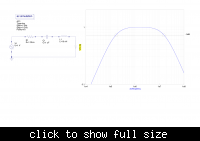goldsmith
Advanced Member level 6

- Joined
- Dec 14, 2010
- Messages
- 3,981
- Helped
- 741
- Reputation
- 1,486
- Reaction score
- 726
- Trophy points
- 1,413
- Location
- Tehran - IRAN
- Activity points
- 24,546
Dear All
Hi
Thank you for your time .
Suppose that i have a capacitor ( an electrolytic ) , how can i measure it's ESR and ESL in practice ? ( without datasheet )
Thanks in advance
Goldsmith
Hi
Thank you for your time .
Suppose that i have a capacitor ( an electrolytic ) , how can i measure it's ESR and ESL in practice ? ( without datasheet )
Thanks in advance
Goldsmith



